So Long, White Devils! Hello, "New Welfare Constituency"!
I’m relieved that the parties are less racially polarized than some polling suggested.
— Franklin Foer (@FranklinFoer) November 7, 2012
Oh yes? You don’t want to buy the argument that white people are tribally clinging to a raft built by rich fellow white people, in part as an attempt to float away from the scary brown gay immigrants?
So then what happened last night? “Mr. Obama won despite losing the support of white voters by wide margins. Overall, he lost this group by 19 percentage points, even larger than his 12-point loss in 2008,” says the New York Times. Now American politics has an entrenched coalition of religious or religious-seeming largely white people, with a small pocket of well-off funders and bundlers who actually benefit from Republican financial ideas, as oppose to the poor whites who imagine they will benefit from those ideas — and there’s mostly the rest of us. “Traditional America” is now over, says Bill O’Reilly.
That’s not going down smoothly for everyone.
Goodluk America u just voted for economic & spiritual suicide. Soulless fools
— Ted Nugent (@TedNugent) November 7, 2012
Note to America’s new welfare constituency of Black, Students, Hispanics,Women: Those “angry white guys” are the ones who pay your bills.
— John Galt Report (@JohnGaltReport) November 7, 2012
Inside Maximum Fun's Podcasting Shindig In The Poconos
Inside Maximum Fun’s Podcasting Shindig In The Poconos
by Chris Chafin

At around midnight on a recent Friday night in the Poconos, television personality and geek humorist John Hodgman was shouting trivia questions about the character actor Vincent Schiavelli (you know him). “What actress, married to Vincent Schiavelli for many years, played Agnes DiPesto on ‘Moonlighting’?” he asked. The question was met with groans of confusion (the answer, which I only learned just now by Googling it, is Allyce Beasley).
There were 200 or so of us in the audience, seated around the giant, slightly antiseptic ballroom of the Inn at Pocono Manor. It was the first night of complicated cultural happening MaxFun Con East, a weekend convention celebrating the insular, devoted fan culture that’s built up around the podcasting network Maximum Fun. In the audience were fans from Brooklyn, Texas, Canada, South Africa, and points in between.
Hodgman, whose latest sartorial flights (including shaggy hair, a bushy jet-black moustache and a penchant for pocket squares and velvet jackets) make him look like an ailing relative of Badger from The Wind in the Willows, was leading several rounds of so-called “pub trivia.” The questioning, which went on to include everything from Presidential ghost stories (Reagan and Carter both claimed to have seen UFOs) to movies that made less than $100,000 (several questions on Donnie Darko), went on until a little after 1 in the morning. The teams combined civilians with the relative celebrities of the MaxFun universe: Dave Hill, Michael Ian Black, famous pencil-sharpener David Rees, as well as hosts of the network’s shows, like “The State” alum Kevin Allison (who hosts the “Moth”-like story podcast “Risk”), Jordan Morris (an LA-based comedian and co-host of “Jordan, Jesse, Go!”), and Canadian Olympiad Donna Vakalis, who made the modern pentathlon a major source of MaxFun fascination during the London Olympics.
***
The next morning, I asked Michael Ian Black what he’d made of the trivia night.
“I got the sense that everyone in that room was like, ‘I just want to go to bed,’” Black said. He was the only attendee to have brought children, and as I observed him, his attention seemed focused most of the weekend on following them around and trying to keep them amused. When I approached him, he’d been rather glumly reading brochures at the hotel’s front desk, as his son wandered around him in circles, eating a bag of potato chips. “Nobody was gonna stay up,” he continued, ruefully, “There wasn’t going to be, like, any make-out sessions, nobody was going to be skinny dipping in the pool. It was pretty much like, ‘I want to get to bed so I can get to my beard-painting class first thing in the morning.’”
He wasn’t kidding about the beard painting class. There was indeed one, held Saturday morning. Other activities included an effective and surprisingly business-like PowerPoint presentation on the finer points of satire from The Onion’s Carol Kolb, a course on writing radio comedy with BBC Radio producer Colin Anderson, a combination crafting and writing workshop with Julie Klausner, as well as one on comedy improv with podcaster Jordan Morris.
Nothing about the weekend is simple for outsiders to access. “It’s weird having to explain to your parents’ friends what a podcast is,” Dave Shumka, one half of the hosting team of MaxFun show “Stop Podcasting Yourself” told me over the phone before the convention. “It’s very weird having to explain what a podcasting network is.” So let’s try to dispatch it quickly. Maximum Fun distributes a group of podcasts, all under one stylistic and monetary umbrella — a full list of them is here. The network is administered by the network’s founder, 31-year-old Jesse Thorn, and a few close aides. It’s based out of L.A., where Thorn lives. Banded together, the networks are able to raise funds together, much like your local public radio station, and then distribute that money between the network’s 10 shows to pay for administrative costs, and the occasional tour or live taping.
Further, all of the shows share a certain editorial thrust, Thorn explained to me. He characterized it as “a sort-of spirit of inquisitiveness and creativity and intelligence combined with humor.” Not only is Thorn the host of PRI’s “The Sound of Young America,” MaxFun’s most visible product, broadcasting on regular terrestrial radio across America and Canada, he’s also the bailiff on satirical judge show “Judge John Hodgman,” the quizmaster on BBC-style quiz show “International Waters,” and one of the titular pair on “Jordan, Jesse, Go!” a show that follows a similar format to many others on the network: two friends joke around about whatever, sometimes with a guest, and sometimes not.
***
Maxfun Con East is the fifth convention thrown by the network, and the first to be held on the East Coast. The convention’s site, The Inn at Pocono Manor, is less the rough-hewn woodsy retreat that you might imagine hearing its name, and more like a geographically non-specific family resort and convention center that happens to be in the mountains (it could just as easily be on the beach, near a waterfall, or in the South Pacific, save for the occasional pair of antlers hanging over a fireplace). Everywhere you went in the resort there were ads for its spas and activities like horseback riding. At breakfast on my first morning, a man in gorilla mask and full-body camouflage handed me a bite-sized Snickers and a flier advertising skeet shooting. It’s the kind of hotel that has overstuffed couches in lurid shades in every hallway and near every window, and which names its meeting rooms with a sort of hodge-podge of Presidential and American history: Friendship, Fireside, Candlelight, Province Town, and so on. But this history was lacquered on: In the ballrooms, there was stone wallpaper, not actual stone walls.
Most of MaxFun Con was confined to the Horizon and Manor Ballrooms, although I did view some exquisite 1950s 3-D photography while seated in a high-backed leather swivel chair around a long conference table in the Andrew Jackson meeting room, and also peeked into beard painting in Buchanan.
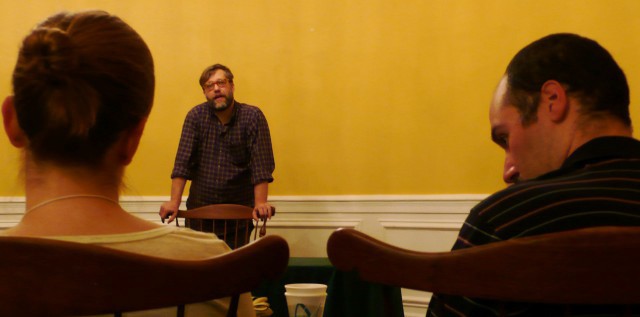
The Long Winters’ John Roderick leads a storytelling workshop
What had brought hundreds of people — most of them white, but split fairly evenly between men and women — out to the mountains with a hurricane bearing down on the east coast? While there were of course different reasons among the attendees — Todd Mazierski was celebrating his 30th birthday with his girlfriend, while Ian Mullan, from Nova Scotia, wanted to meet other people who working creatively in their spare time — many people gave a variation on the answer of attendee Jonathan Carp.
“No one listens to podcasts because they’re happy,” he put it to me, rather bluntly. I’d found him outside smoking a cigarette with a small group of people during a rare bit of unscheduled time on Saturday afternoon. He’d recently turned 22, although he looked older. While we were talking, he guessed that he might be the youngest person in attendance, which turned out to be true (he won a prize for it on the weekend’s final afternoon).
“Basically, everyone here is depressed and anxious at some point in their lives,” he told me. “Last night I was sitting on the couches, with just like six people I didn’t really know, and we were all just really open about having anxiety and depression and social anxiety especially.
“These are kindred spirits, these are friends, these are family,” he continued. “I think that’s the main reason [I came]. People who don’t normally have friends, and we can all come together.”
***
Maxfun’s design purposefully fosters and encourages this sense of community. The network’s message boards, its meet-ups, even its multiple shows are all an effort to be more deeply engaged with its audience. The benefit here is mutual: listeners get added perks; in turn, their loyalty makes the network better able to keep its podcasts on the air by encouraging listeners to donate. Before every standup show, longform interview, or live podcast taping, our benevolent cruise director, Jesse Thorn, would bound onto the stage. He would thank everyone for being there, crack a few jokes, and generally endeavor to make us all feel like one big family.
On the last afternoon, he said that he’d heard the masquerade ball went really late. He asked people to raise their hands for when they went to bed. “Who stayed up until 4? 4:30? 5?!” he asked, sounding increasingly incredulous. The last person to bed (6 a.m.) was handed a box of macaroni and cheese by Thorn as her prize. Then another question for the audience: who’d been to the most Maxfun Cons? This was a couple in their late 60s who had been to all five. They also turn out to be the oldest people there, but he awarded the prize for “oldest person” to another woman, 62, as that couple had already won something.
“Because donations are our number-one source of income,” Thorn told me, “everything we do should deepen our connection with our audience. Someone who’s supported by advertising is all about the breadth of their audience connection — they want to capture as many eyeballs as possible. That’s why everything on television is like, the goal is to just get you to not turn it off. And, for us, it was always about, how can we mean more to people?”
The conventions, which Thorn described as “summer camp plus baseball fantasy camp plus the Wayman Tisdale Jazz Cruise,” have turned out to play a major part in this group-bonding. Thorn is a compulsive community builder, and tends to speak about MaxFun as a “we,” even when he is the only person making decisions. “We decided we wanted to do something in the real world,” he said, before backing up a bit. “Well, basically, it was just me. We wanted to do something that was both a place for our fans to come together, and something bigger than us.”
He ended up putting the payment of the $35,000 deposit for the first conference, held in 2008, on a series of credit cards. Many of these same cards dropped him soon afterward. That first year was the most chaotic. Communication and logistics planning was poor — stand-up comedian Tig Notaro, arrived after her performance time, since no one had told her when her set was supposed to be. This forced a last-minute reorganization of the entire weekend. “I was flipping out, as you would imagine,” Thorn says. Yet despite everything, the weekend was a success. “People were like crying and hugging me at the end,” he says.
The secret isn’t the guests, or the following enjoyed by some the podcasters, Thorn explained. “What you’re essentially doing when you’re creating something like this is creating a space for people to share among other people that are like them, and share their interests and passions.”
Michael Ian Black had similar thoughts. “People listen to John or Jesse’s podcasts or ‘Risk’ or whatever,” he said, “and they’re just like, ‘Yeah, I would get along with those people. That’s a community I would like to be a part of.’ And I guess I sort of feel that way, too. That’s why they came.”
The idea of summer camp inevitably came up a lot over the weekend. Strangers, thrown together in a short but intense period of time, who probably share at least a few interests, but might normally be too shy to talk to each other. I had to duck out before the absolute final moments of the last-event Sunday (I was trying to return my rental car before Sandy closed everything down), but still got to observe a small moment of this togetherness before I left. People were filing into Horizon for a live taping of “Stop Podcasting Yourself.” As I walked by, I noticed a happy buzz coming from the room, the sound of hundreds of strangers laughing and hugging and talking to each other. Everyone had made friends. It had worked out nicely.
Chris Chafin writes for a few places about things you can listen to, play or consume. Here’s his Twitter, which isn’t super compelling.
New York City, November 5, 2012

★★★ Flecks of lint on a dark sweater stood bright and individual in the the sun. The light was warm on one’s face, and only there, in the tightening cold. In the subway, the middle of the rail bed was darker than usual, some unidentifiable part of the lighting system lost to the storm, apparently. Above ground, downtown, the gas station sign lay cracked on the ground. At the late-afternoon taxi shift change, the entrances, usually clogged with cabs, were empty and taped off. Already, again, the sun was going and gone. Without it, the unlined wool coat, fresh from the back of the closet, was suddenly inadequate.
The New, Old Ground Game In New Hampshire
The New, Old Ground Game In New Hampshire
by Ray LeMoine
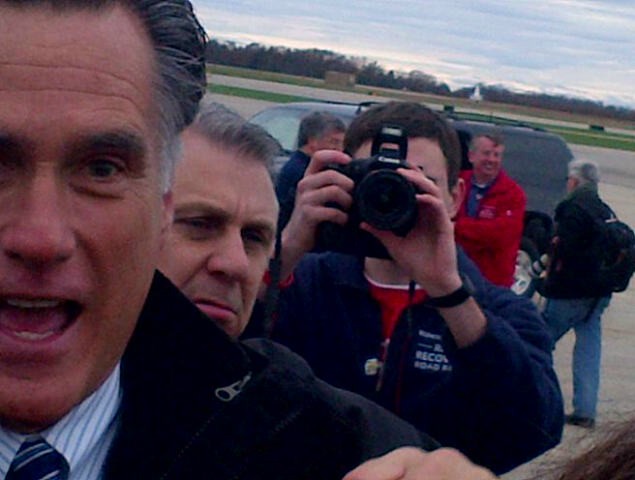
Ten days ago, in Nashua, New Hampshire, Barack Obama gave what had become his standard, sluggish 2012 appeal to a passive crowd of 8,000 voters. A week later, up the road in Concord, though, the confidence of 2008 was back. The crowd of 14,000 had that old Hopey and Changey buzz. Standing stage left were the Davids Axelrod and Plouffe looking very happy to be on the verge of another victory. He closed the campaign with Jay Z, who is obviously now a socialist. What had changed in the interceding week? Had Sandy jolted Barack Obama back in line, even as it had, to borrow Nate Silver’s observation, “blown Romney off course”?
Mitt Romney campaigned in the state Saturday, too, making an appearance in Portsmouth. The corporation running the campaign, Romney Victory, is made up of a bunch of people, too. Many of them were at the rally with the realities of the electoral college mapped on their weary but still smiling faces. “I’ve watched this go from a start to a movement,” Romney told the crowd of 2000.
Campaigning in the state back in January (it seems like eons ago), Romney had been the fun candidate, the confident alternative to Rick Santorum; that’s when he was just developing his shtick for breaking into patriotic hymns. Now he seemed practiced, tired. Then last night he held one final rally in Manchester at the local arena with Kid Rock. Nothing makes local cops act more thuggish than being subcontracted out to the Secret Service at a Republican shindig. Outside, Manchester PD muscled around the crowd, which was made up mostly of families. Inside, I got arrested for being in a non-press area. Sadly, the corporation-people movement looks to be ending tomorrow in Boston at campaign HQ, where Romney Victory is taking the unprecedented step of charging reporters $1,000 just to cover the event. Anticipating a loss anyone?
Looking back over the season, and then being face to face with the candidates these past few weeks in New Hampshire, I’ve attempted to find the truthiest version of the presidential race possible. As the campaigns ran out their final hours, most of the election’s talking points were moot. Super PACs haven’t been nearly the force some feared. And social media is proving a non-factor. What seems to have been the keys to winning? Face-to-face contact with voters: large-scale canvassing operations run by BlackBerry-wielding operatives from hundreds of swing-state field offices.
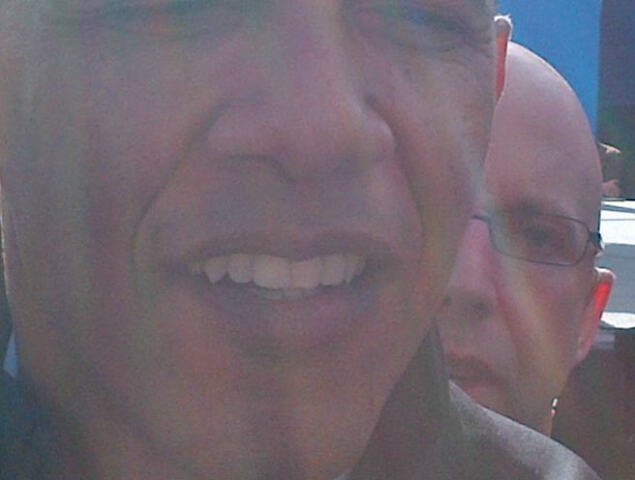
Wait, the BlackBerry and door-to-door vote salesmen? Not iPads and Tweets? This ground game change is a perfect example of the post-future. All the white noise has numbed voters: the blitz of phone calls, emails, texts, FB messages and Tweets has driven swing staters mad. Especially in New Hampshire, which has been in full election mode for 18 months. It’s been an unprecedented season here. Never has there been so much action so late. No 360-degree public view is without a poster, sticker or lawn sign. Meanwhile, in New York, it’s been hard to find any Obama-Romney propaganda, even making allowances for the distraction and hardships of Sandy. Unlike 2008, there are no yuppie babies in Obama jumpers.
In honor of those operatives and field teams, here’s the last few weeks of the 2012 in photographs, with commentary typed out on my RIM phone. None of the pics below have been cropped, photo shopped or retouched.

Undecided women. These are the main target in New Hampshire, and they tend to not answer the phone and are thus hard to poll. I met these women were at a Pimps and Hos Halloween Party at a Manchester nightclub. Most were leaning Romney, and he should carry the animal-print-skirt demographic.

The Obama campaign runs out of this building. About 100 people are working here full time, half for the national Obama for America corporation and half at the state level.
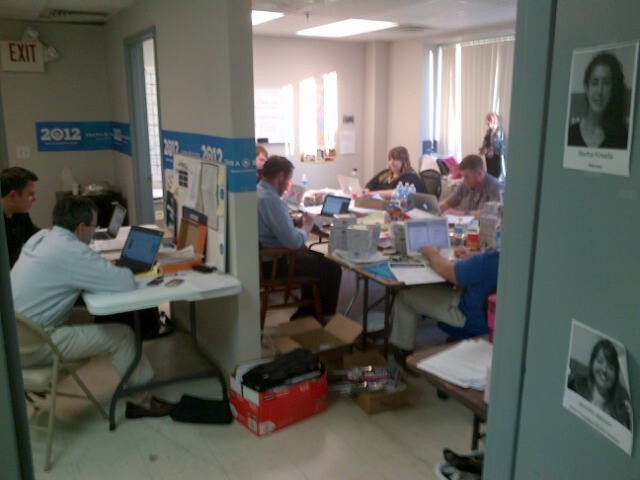
You are not allowed to work for Obama if you are over 30 years old.

The Islamic Society of Greater Manchester is in the basement of Obama HQ. Further proof Obama is a secret Muslim terrorist.
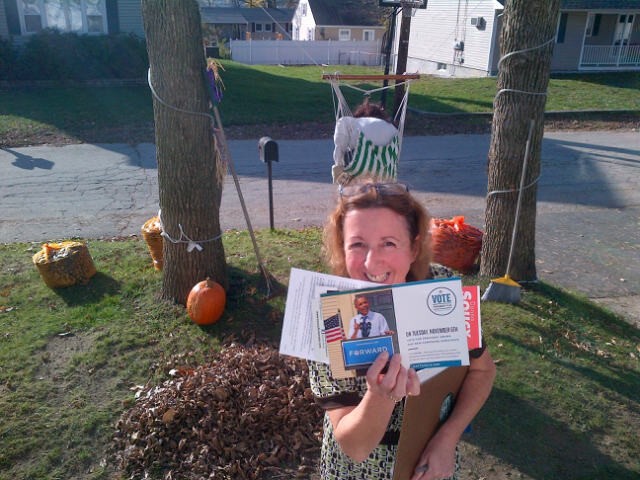
This is called “literature” in campaign speak. It’s really just “propaganda.”

This is called a “driveway” in New Hampshire, where people love anything with a motor, be it a motor home, a green bug with a white hood or a truck with a lift. For some reason these people can’t decide who to vote for. Probably because they are too busy trying to decide which awesome mode of transport to use on a given day.

President Obama drives one car every day. He’s the decider-in-chief and wishes everyone was decisively voting for him. It’s a weird car that would look normal in a New Hampshire driveway, were it painted the color called “off-rust,” had a Bruins sticker where the Presidential seal is and was missing a tire.
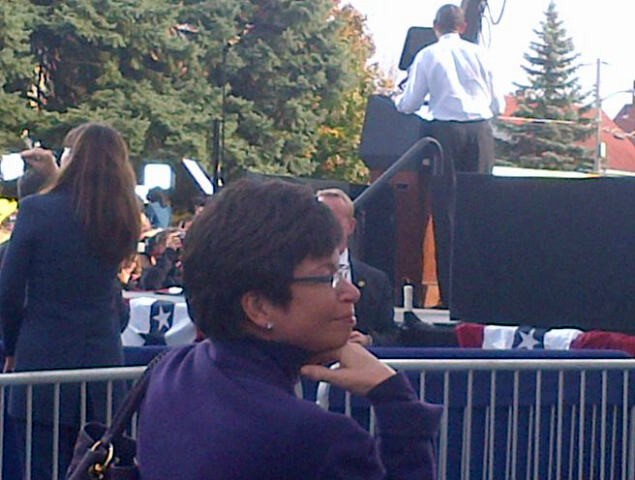
Obama senior advisor Valerie Jarrett listens to her golden child in Nashua. She’s arguably the most powerful woman on Earth. Her sweater matches a Louis Vuitton bag that was the roughly the same size of the three babies Obama kissed that day. I asked, and of course Jarrett uses a BlackBerry… with a super-size battery! When I asked if Obama was going to win, Jarrett said “Absolutely.”
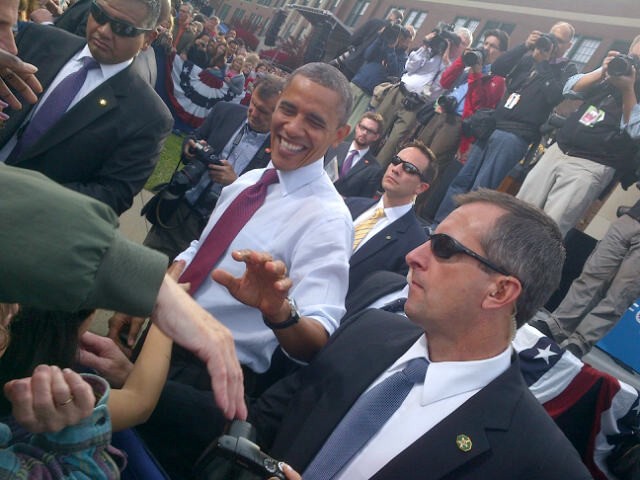
The prez! Shaking Obama’s hand on the rope, I asked if he was the same Jordan-in-the-fourth-quarter as he’s likened himself to in previous elections. Obama laughed. “You know it!” said the closer about to win one last championship for Chicago.
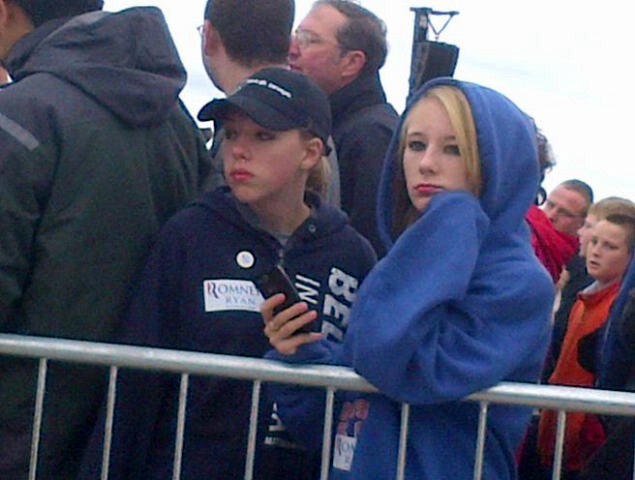
These girls put on lipstick to see Mitt Romney at an airport in Portsmouth.
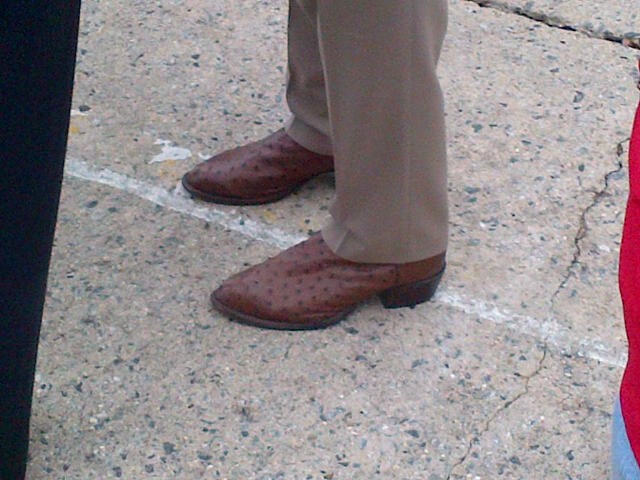
The only cool thing about Louisiana Governor Bobby Jindal are his gator skin boots.
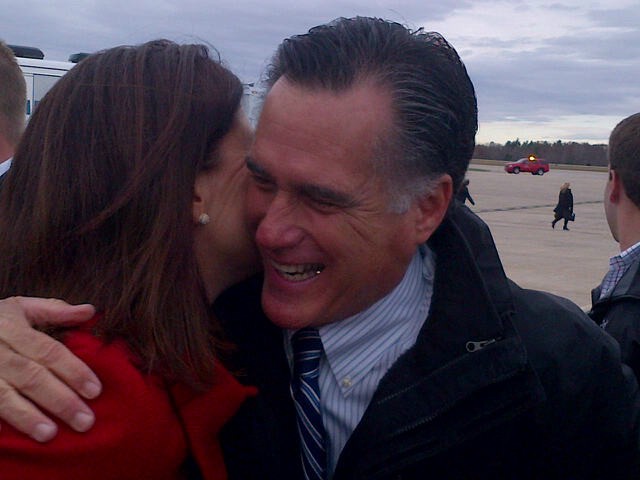
Mitt hugs New Hampshire Senator Kelly Ayotte, who has been stumping for him since the very beginning. When asked if Mitt was going to win, one staffer admitted the path to victory was “narrowing,” which is campaign speak for “we’re fucked.”
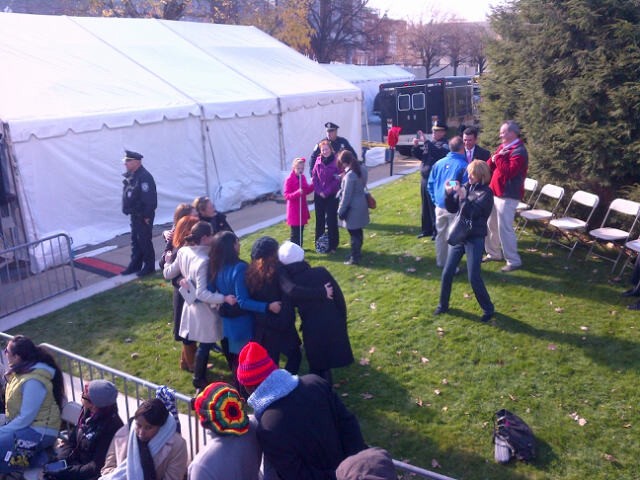
The White House women pose for a picture in Concord. All of them were wearing knee-high boots, although none as cool as Jindal’s.
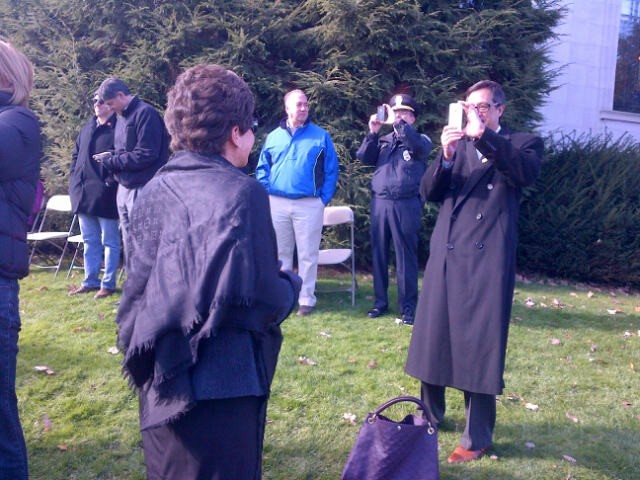
Here’s Jarrett again, posing for a picture with Obama speaking behind her. Note the purple LV bag is a foot tall. Also: she’s wearing a Louis Vuitton cape, like a witch! Maybe she created the Franken-Obama who emerged in the last week? Oh right, she did.
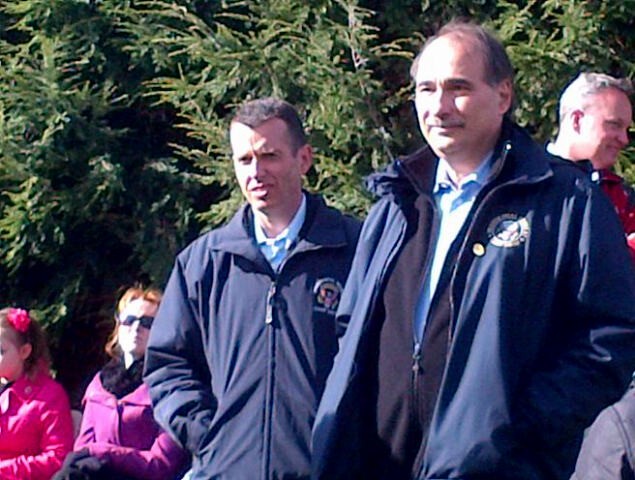
What we worry? The Davids Axelrod and Plouffe both wearing, yes, Camp David jackets, smiling away as their guy stumps in Concord. These two ran the perfect campaign in 2008. Then somehow completely blew it while Obama was president. Most Americans don’t think Obama accomplished much. Facts show otherwise. The first-term disconnect falls largely on these bros’ inability to communicate Obama’s successes. But I guess if they win it doesn’t matter.

Bill Clinton and Obama post-rally heading to greet voters. Seeing these two together makes me proud to be an American. For once.
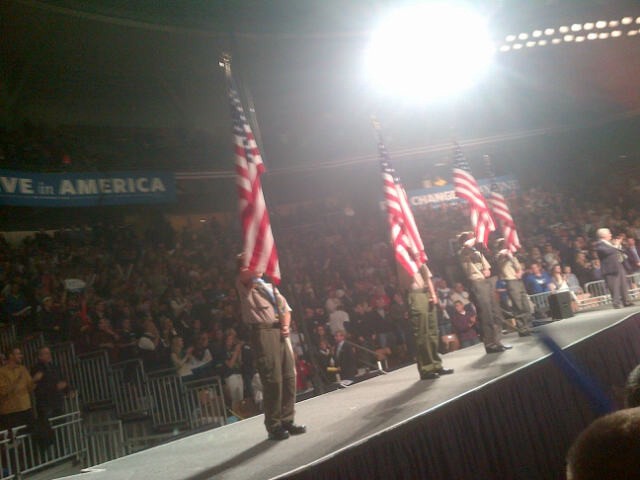
The Boy Scouts demonstrate GOP family values at the Romney rally in Manchester.
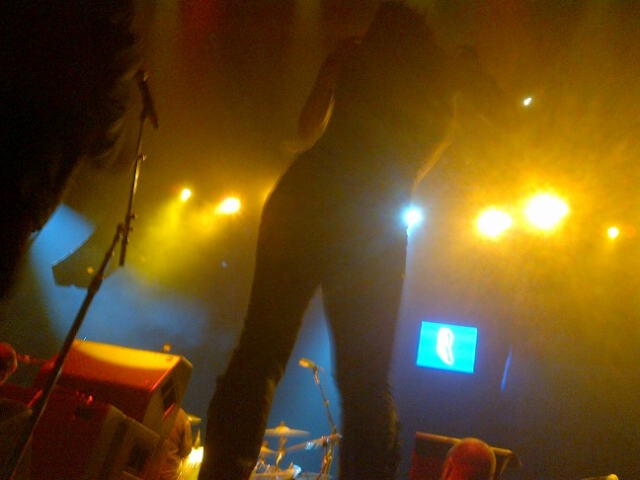
Kid Rock’s dancer demonstrated GOP family values at the same rally.

Kid Rock may suck as a musician, but as a human he’s pretty fucking cool. Homeboy came out in a fur coat.
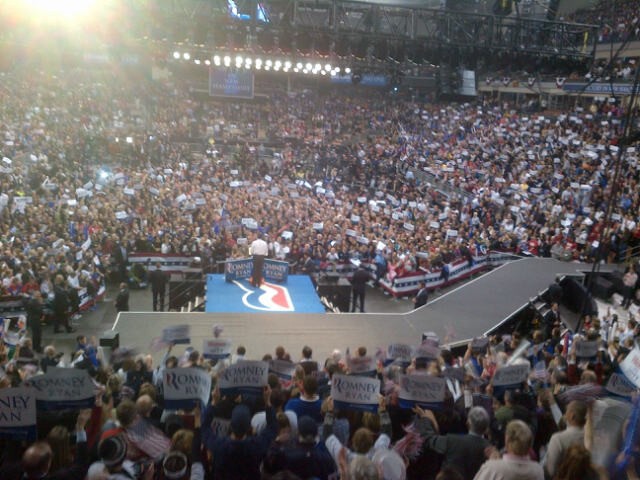
Mitt pleads his case. Usually I’d be pretty neutral on this stuff, but I’m really hoping this is the last I see of him for a long, long time.
Sent via BlackBerry
Related: The Truth About Voting Machines and Who Will Be The Wrongest Pundit Of Them All?
Ray LeMoine was born north of Boston and lives in New York.
Tonight's Election Coverage: Five Things To Watch
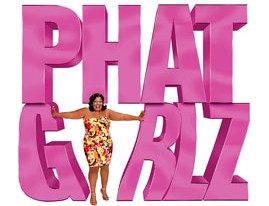
Star Trek IV: The Voyage Home (IFC): I think this is the one with the whales. Nanoo-nanoo!
“The Cosby Show” (TV Land): They say the Obama presidency would not have been possible were it not for the gentle example of Cliff and Clair. On the chance that the contemporary, reality-TV version is canceled, why not bask in the memories? Hopefully it’s one of the rare episodes where an old blues guy comes to visit.
“Full House” (Nickelodeon): They say the Romney presidency would not have been possible were it not for the gentle example of Danny Tanner. Actually, nobody has said that, but what the heck, you’ve got a whole bunch of white people living together in the same space. And there are a whole mess of Romneys. Close enough. Hopefully it’s one of the rare episodes where Michelle does something adorable and D.J. learns a valuable lesson.
Phat Girlz (Oxygen): While no one doubts that Mo’Nique’s performance in Precious was both terrifying and astounding, it is well established within the industry that she received her Oscar for that film as an acknowledgment that the Academy had made a serious error in failing to award her for her tough, gritty portrayal of Jazmin Biltmore, whose obsession with her weight creates an obstacle on her path to true love. (Please note, this starts at 7 PM eastern, so you should plan to tune in then or else you’ll miss some crucial characterization work.)
“Alaska: The Last Frontier” (Discovery): Given the way things are going, Alaska probably is going to be the last frontier. Start learning now about what life is going to be like when we all have to evacuate to what will soon be the only place left. Also, get ready for the phrase, “Yes, Queen Sarah,” because you’re going to be saying it a lot.
Understanding The American Election
“Two German illustrators have visualized the most important facts about the US presidential election using burgers and fries, the stereotypical American meal. The playful images are packed with both calories and information. They also betray a few differences in how fast food is eaten in Europe.”
How Much More Money Do Presidential Candidates Raise Today?
How Much More Money Do Presidential Candidates Raise Today?
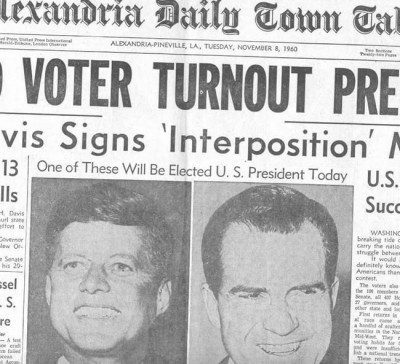
As we slog through Election Day, let’s look at the money that’s gone into this election season. Not so long ago, it was reported that the Obama campaign apparatus had raised one billion dollars in the bid for reelection. It’s not a universally accepted figure, and the final tabulations aren’t in yet, but by the calculations of the New York Times, both candidates had raised roughly $900 million each, as of Oct. 17th. A lot of money. Compare that to the amount that John F. Kennedy raised in his 1960 race against Nixon: $9.8 million, which, adjusted for inflation, equals $76.6 million.
Another interesting thing: Nixon, who had raised more, lost. We know elections have gotten more expensive with time, but at what pace? Do the costs increase in line with the increases of other commodities and not-quite commodities? And does the win always go to the candidate who raised the most?
***
There was no such thing as a campaign finance law until 1867. That law was not so much groundbreaking, as all it did was prohibit solicitations from Navy yard workers. Nearly forty years later, during Theodore Roosevelt’s second term, it came to be known that he had taken a $150,000 donation from J. P. Morgan, which Roosevelt had kept secret. This was not illegal, but definitely unseemly for a reformer like Teddy Roosevelt.
Roosevelt’s problem, to put it mildly, was the appearance of impropriety. If a campaign is financed either by the candidate or from donations coming from a multitude of sources, then who is there for the candidate to be beholden to? But if the campaign is financed from practically a single source (aside from the Morgan contribution, three-quarters of Roosevelt’s 1904 campaign war chest was comprised of railroad and oil company money), then it certainly appears like the candidate owes the single source something — loyalty, deference, even legislative favor. It’s not as if graft and patronage were new to the electoral process, but the deep pockets that came out of the Industrial Age had the wherewithal to metastasize the process to a national level.
So before Roosevelt left office, the Tillman Act was passed and signed into law in 1907 — the first significant national law governing campaign financing. The Tillman Act banned the acceptance of campaign funds from corporations and national banks.
The intention was to totally solve the problem, and of course it didn’t. It was child’s play to end-run the legislation, even as it evolved with the Federal Corrupt Practices Law of 1925 and the Hatch Act of 1940 and the Taft-Hartley Act of 1947. Additionally, these laws faced opposition in the form of litigation, and were largely toothless because they did not create the mechanism that would enforce the regulations.
The funding provided by these business entities and unions that persisted despite legislative efforts to prevent it is what we’ve come to know of as “outside spending.” 1971’s Federal Elections Campaign Act codified exactly how this outside spending, contributed by so-called Political Action Committees that front for the interest providing the money, would be legislated — who can contribute, how much can be contributed, where the PAC can contribute their funds, disclosure requirements, etc. — which evolved into a tangle of ever more specified vehicles for circumvention, all technically legal though thoroughly objectionable. Even before the Super PAC, with their lack of contribution limits and flimsy candidate-coordination rules, there was a jungle of “outside spending” so convoluted and arcane as to become indistinguishable from the campaign coffers themselves.
Super PACs: surely you’ve heard of the Citizens United decision handed down by the Supreme Court in 2010, which enabled corporations to raise unlimited amounts of money for political spending. It was a groundbreaking case, and certainly altered the political landscape, but the one thing that it did not do is create this “outside spending.” Before there were Super PACS, there were all the other PACs, entities created by business and/or union interests looking to get around the ban on spending money by businesses and unions to influence federal elections.
It’s true that during this cycle the amount of the Outside Money being raised is staggering, equal to or exceeding the campaign and national committee fundraising, and the spending of this money has a lot fewer strings than it used to. But it’s not necessarily a new phenomenon. If America loves anything, it’s finding new and exciting ways to give money in support/opposition of presidential candidates.
This is not to say, of course, that the campaigns don’t also raise their own money, and the FEC. There are very specific laws governing how a campaign itself can raise money, which are enforced by the Federal Elections Commission, created by Congress in 1975 as the enforcement/compliance mechanism for campaign finance laws. As laid down by the FEC, corporations may not contribute to campaigns or national party committees (i.e., the Republican Party), and individuals are limited to $2,500 per candidate. The laws are similar for contributing to national party committees, although the personal limit is much higher, (currently) $30,800. And no, these personal donations are not tax deductible.
***
Let’s talk actual figures. We’re going back to 1960 and hitting every campaign between then and now, which will give us a thirteen-point snapshot. The amounts that we cite are amounts spent and not amounts raised, as those figures are not always the same. Campaigns end up with surpluses sometimes, which can be rolled over into a new campaign or donated to someone else’s, or even a debt, which is handled like debts are here in the real world. Take, for example, Gary Hart, whose debt from his 1984 campaign was one of the factors that sank his 1988 campaign that did not involve a boat named “Monkey Business.” Conversely, after the 2008 election, the Obama campaign had $15 million dollars left over.
Below are the amounts spent per major party candidate, with the winner of the election in bold. The figures are from this invaluable New York magazine feature. (No sources were cited, but we confirmed the data.)
1960
John F. Kennedy: $9.8 million
Richard Nixon: $10.1 million
1964
Lyndon Johnson: $8.8 million
Barry Goldwater: $16 million
1968
Hubert Humphrey: $11.6 million
Richard Nixon: $25.4 million
1972
George McGovern: $30 million
Richard Nixon: $61.4 million
1976
Jimmy Carter: $33.4 million
Gerald Ford: $35.8 million
1980
Jimmy Carter: $49 million
Ronald Reagan: $57.7 million
1984
Walter Mondale: $66.7 million
Ronald Reagan: $67.5 million
1988
Michael Dukakis: $77.3 million
George H.W. Bush: $80mm
1992
Bill Clinton: $92.9 million
George H.W. Bush: $92.6 million
1996
Bill Clinton: $108.5 million
Bob Dole: $110.2 million
2000
Al Gore: $127.1 million
George W. Bush: $172.1 million
2004
John Kerry: $328.5 million
George W. Bush: $367.2 million
2008
Barack Obama: $745.7 million
John McCain: $350.1 million
Now let’s take those figures and convert them into 2012 dollars, adjusting them for inflation by using this calculator:
1960
John F. Kennedy: $76.6 million
Richard Nixon: $79 million
1964
Lyndon Johnson: $65.7 million
Barry Goldwater: $119.4 million
1968
Hubert Humphrey: $77.1 million
Richard Nixon: $168.9 million
1972
George McGovern: $166.1 million
Richard Nixon: $339.9 million
1976
Jimmy Carter: $135.8 million
Gerald Ford: $145.6 million
1980
Jimmy Carter: $137.6 million
Ronald Reagan: $162 million
1984
Walter Mondale: $148.6 million
Ronald Reagan: $150.3 million
1988
Michael Dukakis: $151.2 million
George H.W. Bush: $156.5 million
1992
Bill Clinton: $153.2 million
George H.W. Bush: $152.7 million
1996
Bill Clinton: $160 million
Bob Dole: $162.5 million
2000
Al Gore: $170.9 million
George W. Bush: $231.3 million
2004
John Kerry: $402.4 million
George W. Bush: $449.8 million
2008
Barack Obama: $801.5 million
John McCain: $376.3 million
Here’s what that looks like in chart form.
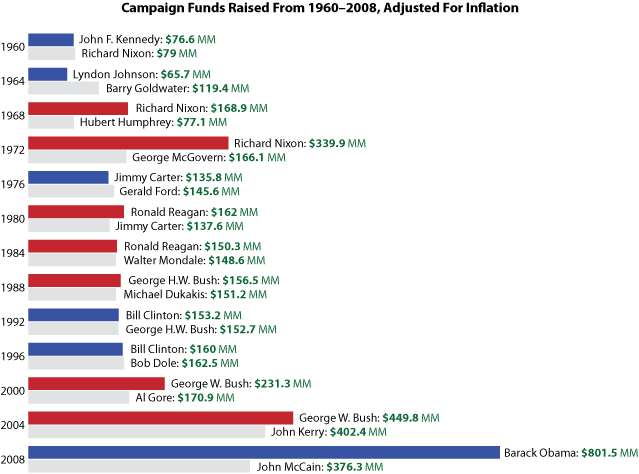
The question of whether the cost of running a presidential campaign has increased is an easy one to answer: hell yes, though not in a measured fashion. It doubled during the 1960s, and then held relatively steady until the turn of the century. And in the past twelve years, it’s exploded, headed straight through whatever roof we imagined to be there.
One explanation for the very recent skyrocket cost of running an election is mechanism of matching funds. The Federal Election Commission provides a block grant for major party candidates, provided that the campaign agrees to certain spending limits and stops accepting personal contributions after accepting the public financing. This is where that three dollars that you check off on your 1040 goes. Well, Barack Obama in 2008 was the first major candidate ever to elect not to receive matching funds, and continued to raise money throughout the election, while John McCain was limited to the money he had already raised, plus the FEC funds. Obama doubled McCain’s spending. And this year, both candidates have opted out of public financing, and accordingly they look to spend two billion dollars combined. This appears to be the new norm.
And as to the question of financial advantage, the candidate that spends the most money is not always the candidate that wins. Barry Goldwater had a nearly two-to-one advantage in 1964, and got thumped, and Gerald Ford and Bob Dole each had financial advantage, which advantage ended up being fruitless. Having said that, in the past thirteen elections, the underfunded candidate has only won four times. Each of those three times it was the Democratic candidate, Kennedy, Johnson and Carter, and the reelection of Clinton. In that time period no underfunded Republican has won.
***
If you’re curious about where all this money comes from, you might enjoy spending a couple hours with OpenSecrets.org from the Center For Responsive Politics. And if you’re curious about the impact and implications of the constant need of candidates to raise money, give this “This American Life” episode a listen, and explore the issue of what keeps political donations from being a clear case of quid pro quo? (Spoiler: nothing, really.) And if you’d like to read more about the influence of corporate money after the Citizens United decision, swing a dead cat.
But we tend to issues of how much things cost as compared to how much they used to cost, and elections cost an awful lot, to the point where office-holders contemplating reelection spend as much time raising money as they do governing. The financial burden was already there, but it’s climbing swiftly and of late. Adjusted for inflation, Barack Obama four years ago spent more than ten times what John F. Kennedy spent to win a nail-biter. If in each case you divide the (adjusted) money spent by number of votes won, Kennedy spent $2.23 per vote, and Obama spent $11.52 per vote. Is it that votes are just more expensive to obtain? Is our support a more daunting proposition? Or is it that the process of elections, hundreds of years old, have become a legitimate economy in ways that they weren’t before, with specialized professions like polling and “messaging” evolving out of perceived utility.
Or is it that campaigns stick with what works? The last underfunded candidate to lose was Bob Dole, so at least superstitiously, money wins the race. And now that Barack Obama has demonstrated that to eschew public financing is no longer taboo, the days of relatively sane price tags of campaigns are a thing of the past not to return.
Previously in series: How Much More Do Martinis Cost Today? and How Much More Do Books Cost Today?
Who Will Lose Because Of The Crucial 'Halo 4' Demographic?
Will the release of Halo 4 “keep dedicated players from voting”? Um, I hope so?
The Instagram Voting States
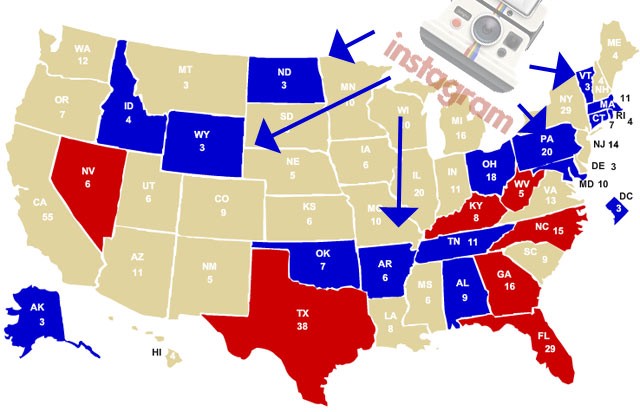
RED: Do not take photographs inside your polling place, fool. Is your Instagram a crime? Likely!
TAN: Do not show anyone a photograph of your ballot or your ballot. These laws — for instance, Oregon’s — are commonly phrased as “A person may not show the persons own marked ballot to another person to reveal how it was marked.” This is how poll watchers look for forced voting and bullying. Like when your mom checks your ballot to make sure you voted for Glenn Beck or Roseanne or whoever.
BLUE: GO NUTS UP IN THERE. (Do not go nuts. There are lots of grey areas. Do check your state!) Also?
Want to know if Instagramming your ballot is legal? Here’s my handy guide: Don’t Instagram your ballot what the fuck is your problem
— max read (@max_read) November 6, 2012
That.
Weather Wizard Points Icy Finger At Region And Casts Spell

You know how in olden times a person would foretell the coming of evil and the villagers would gather together and sacrifice him to the gods in hopes of propitiation? I am not at all suggesting we should do that to Eric Holthaus of the Wall Street Journal, but I do kind of feel that if we had taken him out a couple of weeks ago when we had the chance it would have been nothin’ but blue skies ever since.
